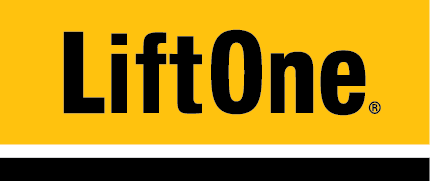When operating a forklift, safety should be the number one priority. With nearly 96,785 forklift injuries occurring each year, it’s important to refresh on safe forklift operation to minimize the risk of injuries or damage to facilities.
Jump to Sections:
- 1. Operators Must be Trained and Authorized
- 2. Complete Thorough Pre-Shift Inspections
- 3. Use Operator Restraint Systems
- 4. Trained on how to refuel or charge the battery
- 5. Know the Capacity and Weight of Forklift
At LiftOne, we’re committed to keeping you and your team safe and encourage sharing the following safety tips with operators at your facility.
1. . Operators Must be Trained and Authorized
Operators are responsible for the safe operation of their vehicle. It’s critical they’re trained on the specific truck, including make and model, to safely handle the loads they are carrying. Additionally, operators must be trained on different worksite hazards, rules, and guidelines to prevent accidents or damage to facilities.
2. Complete Thorough Pre-Shift Inspections
OSHA requires that prior to using a forklift, each operator conducts a thorough pre-shift inspection. This inspection includes an examination of the forklift, restraint systems, and attachments on a daily basis, before being placed in service, every shift, and after use. Ultimately, a truck should be examined three times a day for a facility that runs 24 hours. If a truck is found unsafe, or in need of repair, it should be immediately taken out of service.
3. Use Operator Restraint Systems
Every time a truck is in operation, the operators should use their seatbelt. Buckling a seatbelt takes two seconds and can save an operator’s life!Every forklift has a different operator’s restraint system; here are two of the most common:
Sit Down Counterbalance Truck
• Functioning Seatbelt
• Hip Restraints
• Reinforced Hood Latch or Battery Restraint
• Reinforced Steering Column
Order Picker / Order Selector
• Proper Harness / Lanyard
Note: The body harness should be inspected and free of damage
4. Trained on how to refuel or charge the battery
When changing an electric battery:
• Use the proper handling equipment and racks.
• Reference the truck data plate for the appropriate battery size and weight.
• Make sure the battery is shimmed to the rear with no more than ½ inch movement in any direction.
When re-charging an electric battery:
• Refer to the SDS Sheet from the battery supplier for the proper PPE. Charging batteries produces hydrogen gas, which is explosive.
• Electrolytes must cover the plate protector before charging.
• Only water the battery when it is fully charged.
• Plug the charger into the battery, not the truck.
• Leave the cover open to ventilate and make sure functioning caps are in place.
When filling or changing an LP tank:
• Make sure there is no smoking or ignition sources within 25 feet.
• Avoid confined areas
• Install the tank with the relief valve at a 12 o’clock position and with the tank bracket pin aligning with the tank hole.
• Inspect the tank. Tanks that are damaged must be replaced. Tanks that are twelve years old must be replaced or requalified.
5. Know the Capacity and Weight of Forklif
To safely handle loads, operators need to know the capacity and weight of their truck. Operators should never overload the truck with too much weight or too long a load center. They should never exceed the capacity of floors, storage or handling equipment, elevators, cargo vehicles or dock boards, plates, and levelers.
The data plate will specify the capacity and the rated load center that the truck is able to lift safely and any attachment(s) that may be on the truck. It’s important the data plate is inspected prior to use and checked for accuracy.
If you have any questions about forklift operator safety, or would like to have on-site training for your employees, please reach out to LiftOne’s Training Team.










